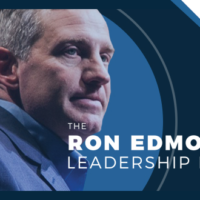
I am frequently asked about how I conduct staff meetings with teams I lead. They are looking for some sort of basic meeting structure to incorporate with their team.
But I have always had a difficult time answering the question for two reasons:
1. I don’t always lead staff meetings for the teams I lead. Typically, I let other staff members lead them. In previous churches, I usually let the bulk of staff meetings be led by the executive or associate pastor. I even like to float some leadership in meetings between different team members. It adds a fresh perspective and gives other people experience.
2. I don’t like doing the same thing every time. Just as I like to see variety in our worship services, I like to see changes in the way we conduct meetings. I get bored easily. (I suspect others do also.) It could be that we move rooms. We might change up the setting and go off campus. Sometimes we start with prayer/devotion and sometimes we close with that time. We eat together at times and other times we get right to business. I never want to keep the same pattern long or things get stale.
So, I want to change things up frequently. Different locations. Even different people in the room.
But, as I have been asked the question so many times I reflected on an answer. Regardless of the size of the room – whether it is leadership team meeting or an entire staff, there are some things I’m trying to accomplish every time we meet.
Here is a basic meeting structure for teams I am trying to lead:
Hear from me. I want there to be a time where people on the team know what’s going on in my mind. What am I currently thinking about/dealing with? Where do I see things going? I have learned people will often wait for the leader to share before they will proceed.
It should be noted, I want an empowered team. I love when people take their own initiatives without being asked. And I will often do this later in the meeting to keep from squelching other ideas. But experience tells me most won’t until they know what the senior leader is thinking.
Hear from others. Everyone gets a chance or at least could share what is on their mind. What are the current struggles or obstacles people are dealing with? We only know what we know, right? So, I want people to have a place to vent if needed. But also, their own current ideas, hopes and dreams. Healthy teams empower everyone with a voice.
I have shared this before, but I am sensitive to the introverts in the room. (My kind of people.) So, I will even allow people to text or email in their answers. In the Zoom world, that is taking advantage of the chat feature.
Celebrate Wins. Whenever we get together we should encourage one another. That’s what keeps a team a team – when we get to realize what we are accomplishing as a team. So, every time we meet there should be an element of talking about the places the team is achieving our mission.
The celebration should be representative of the effort to accomplish the win. For example, you may applaud and congratulate an individual who accomplished a small project over the weekend, but if a whole team completed a major event successfully a party might be in order.
Consider Next. This is for everyone to participate, but what are the next exciting things ahead for us as a team? What could we accomplish together? How could we address some of the current opportunities and challenges?
I don’t care for meetings that are simply informational. Meetings are a use of valuable time and can easily be a waste of time. So, every time we get people together we should be using that time to drive the mission of the organization forward somewhere new.
Delegate details. Who is responsible for what? What does a win look like when we leave here?
The worst thing you can do is to leave a meeting with no assignments of what was discussed or people wondering who is going to do what next. Again, it is a waste of precious time.
I like to have someone document the events of the meeting – not in a formal minutes kind of way, but in a format that’s easy to see, in a document shared by everyone, where people can see a timeline of who is responsible and by when. Then we can follow up on those items at the next meeting.
Answer questions. I can be very big picture and leave a lot of unanswered questions. I may not have an answer, but at least the question gets on the table, because someone likely does. Of course, there are many times, such as during a pandemic, when the answer is we will simply have to wait and see. But as much as possible I try to answer questions.
Therefore, I love to ask questions. Great leaders ask great questions. And in every meeting I want to provide a couple of questions to draw out of people what they are thinking.
Fellowship. This varies based on the frequency of the meeting. Of course, there are emergency meetings where it wouldn’t make sense to discuss what you did over the weekend for fun. For most meetings, there is a time just to catch up and build relationships with the team. The best meetings I have experienced have time simply set aside for fellowship.
Frankly, as one wired to be more task-oriented, this part of the meeting takes discipline for me. But I’ve observed over the years that this time of fellowship among the team builds the team. It is so important that sometimes we build opportunities just for this.
So, there’s my “basic meeting structure”. And I realize these may be elements more than an actual plug-and-play structure, but for me everything else is on the table to move around, rearrange, cancel or adjust in how we conduct the meeting – or where. Change it up!
Nate and I have launch a new season of the Ron Edmondson Leadership Podcast soon. Subscribe now so you don’t miss the next one.








Forgot password?
Close message
Subscribe to this blog post's comments through...
Subscribe via email
SubscribeComments
Post a new comment
Comment as a Guest, or login:
Connected as (Logout)
Not displayed publicly.
Comments by IntenseDebate
Reply as a Guest, or login:
Connected as (Logout)
Not displayed publicly.